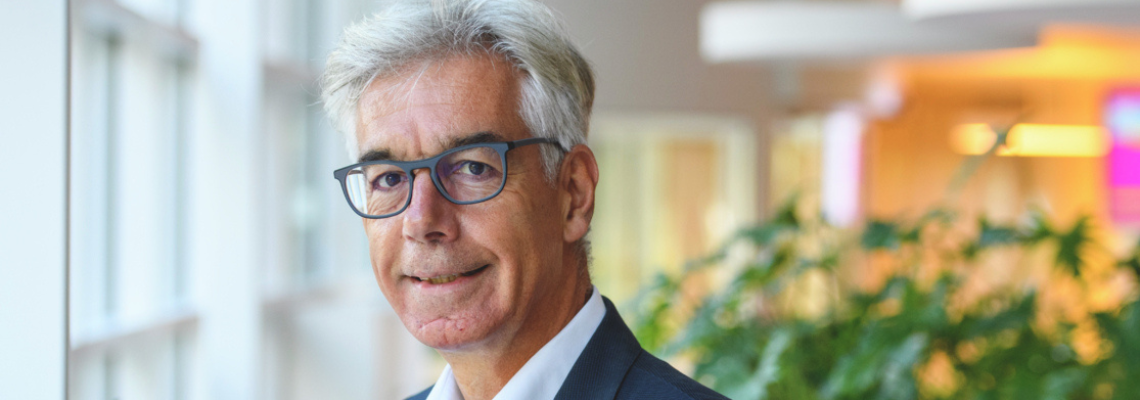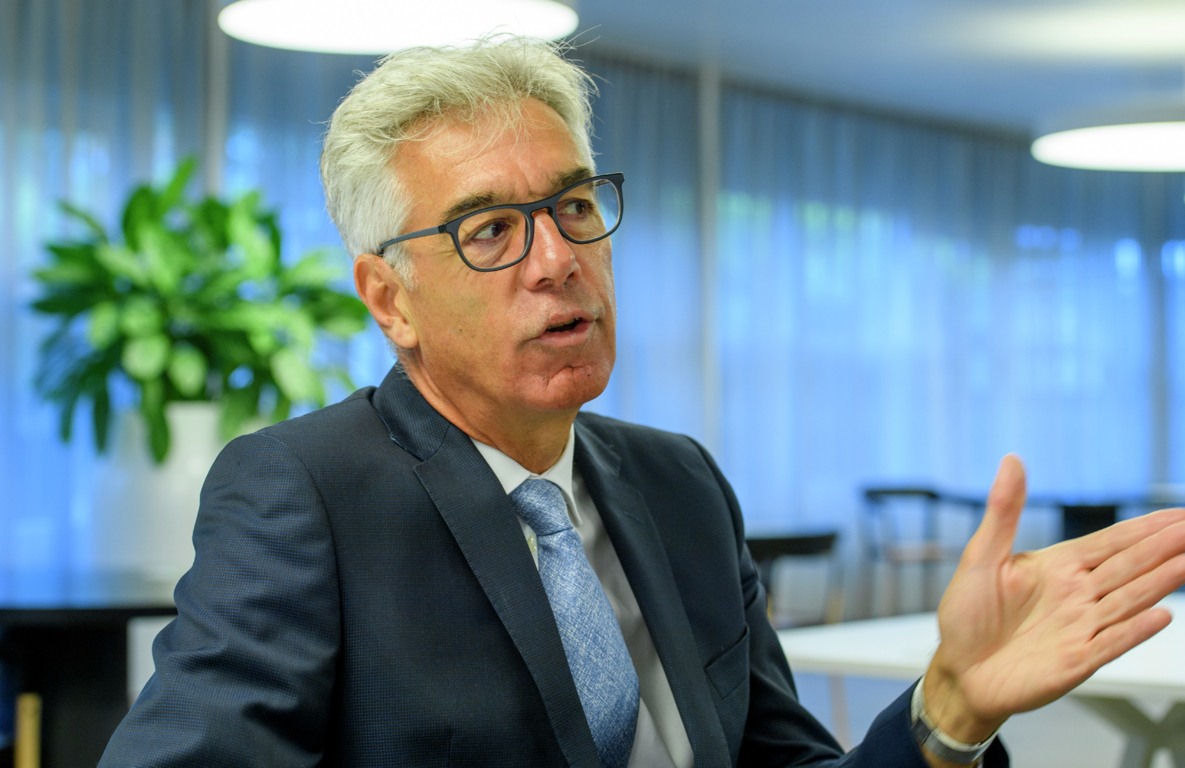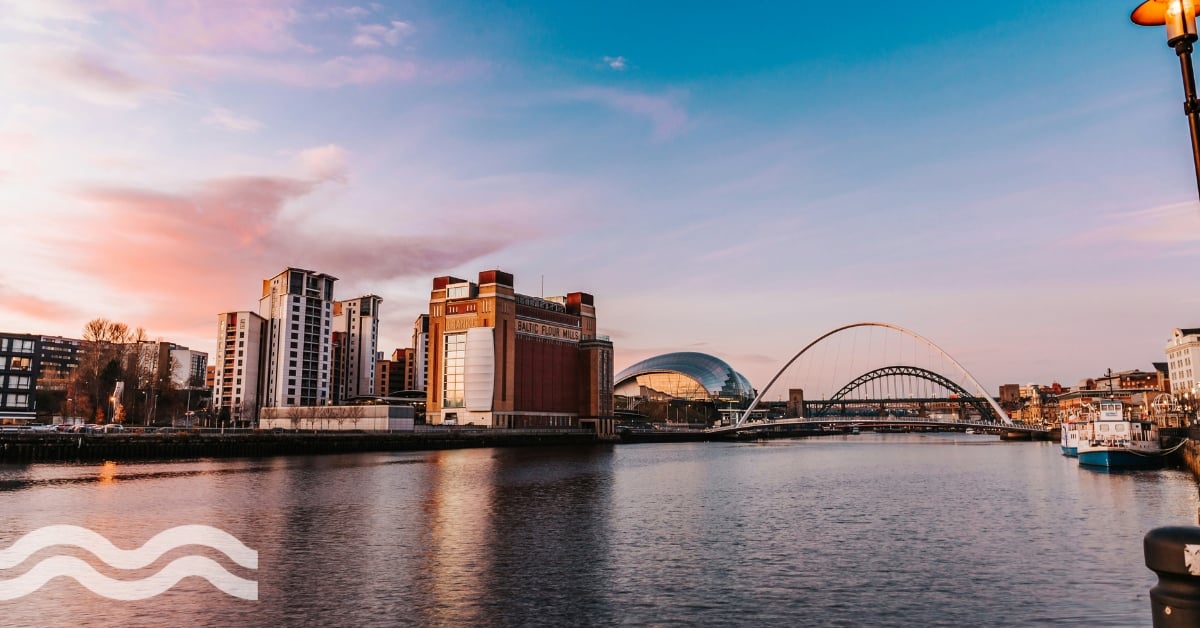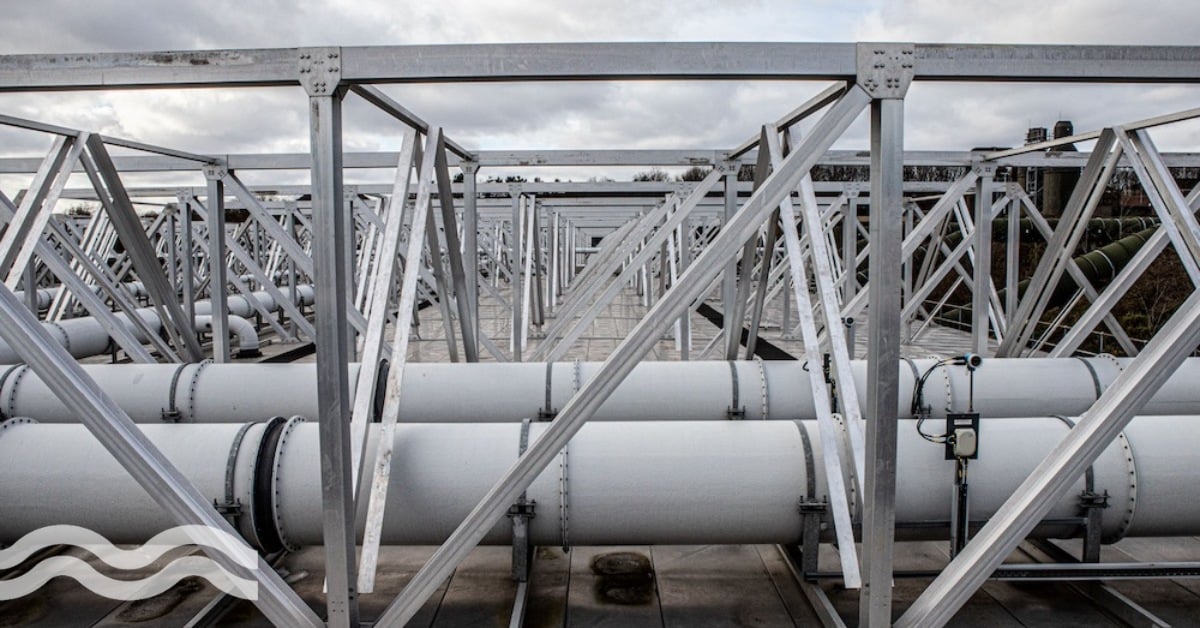Utility leader interview: Jelle Hannema, CEO, Vitens

Jelle Hannema leads Vitens, the largest drinking water company in the Netherlands serving 5.8 million customers and companies. In a wide-ranging interview, Tom Freyberg speaks to the CEO about water demand reduction strategies, pairing digital and business strategy and the threat of Perfluoroalkyl and Polyfluoroalkyl Substances (PFAS)
Jelle Hannema laughs at my question. For the CEO of the largest water utility in the Netherlands, Vitens, this comes as a surprise for such a poised, professional and serious leader.
“I don’t even think that’s a question,” he laughs.
Having interviewed hundreds of CEOs, I don’t often get that response. My question, perhaps seen by many as provocative, is whether it’s the job of a water utility to be innovative, or well-functioning?
Perhaps playing the devil’s advocate role, I wanted to repeat the often-quoted line that “water is slow to innovate” to see Hannema’s response.
“Innovation is a must,” he throws back immediately. “We are talking about water quality, solving scarcity, improving the dialogue with our customers and improving the system.”
The CEO believes innovation needs to go far beyond the technology.
“It’s about innovation in cooperations and finding new business models,” he adds. “If you don’t innovate you will find yourself out of business. Every utility needs to have a strong pillar of innovation within its business strategy.”
He asks the question “what can we do to keep the water in the system?”
And it’s this point that is as topical as ever. The Netherlands has become known as a “Master” of water. With much of the low-lying country below sea level, it had no choice but to engineer its way out of the challenge, so water is diverted away from the land. As Hannema says, “we’re a victim of our own success”.
A country historically abundant in water, the Netherlands has however recently been wrestling with uncharacteristically dry weather. As Hein Pieper from water authority Rijn en Ijssel previously told me, “many companies don’t realise that they will have big problems with their water supply”.
Environmental impact of groundwater extraction
As the largest drinking water provider, Vitens is responsible for almost 100 production facilities and over 50,000km of water network. Hannema is aware of the threat multiplier of climate change impacting his company’s operations.
“We’ve existed for 130 years. When our clients ask for water, we brought them water. We have to change, and our clients have to change.”
Viten’s main water source is groundwater, otherwise known as aquifers. With increasing pressure on the utility to provide more water (10 per cent more over the last five years), the CEO acknowledges the potential environmental impact.
“Extracting groundwater has impacts on the surface, whether it’s crops or nature,” he says. “We want to extract water without impact on our surroundings. Extreme weather and climate change mean we are causing an impact bigger than we want.”
Serving 5.6 million people and hundreds of companies daily with water, this equates to a huge saving.
Hannema is optimistic about the challenges ahead. In an almost a call to arms, he says: “This situation makes it very urgent to work on the water transition together with the water stakeholders across the Netherlands. A transition of the drinking water system as part of the water system is necessary.
“It is worrying that it takes so long to develop and put into production new drinking water abstractions. It is important to control these withdrawals and to ensure that they take place in a controlled manner, otherwise the harmful consequences of climate change will only increase,” he adds.

Reducing water consumption to 100 litres per day
Around 400,000 houses will be built in Vitens’ catchment area alone by 2030. To help meet future demand, help is on hand in the form of a water demand reduction policy.
Across the Netherlands, people use on average, 130 litres of water per day. There is now a policy to drive this down to 100 litres per person per day.
Serving 5.6 million people and hundreds of companies daily with water, this equates to a huge saving. In fact, a whopping 168 million litres of water per day reduction (approximately). That’s 168 million litres of water that doesn’t need extracting, treating, or distributing – a huge environmental saving across the utility’s entire supply chain.
“People in the Netherlands always thought there can’t be a lack of water – it’s in abundance!” he remarks. “So, we’re asking a different mindset of all of our customers and clients. Communication is very important here and we need to have more dialogue on the topic.”
It’s that word, communication, that will dictate success here. Drivers to motivate people to use less water vary depending on the demographic. What drives one family to reduce water might not resonate with another. To further explore what drives behavioural change to create more sustainable water use, Vitens is collaborating with Wageningen University & Research.
For Hannema, reducing water demand is part of a dual-pronged strategy, alongside adjusting the current infrastructure.
“Resilience is our keyword,” he says, as if proudly announcing the name of a child. “It’s urgent for us to bring in more flexibility in our planning, developing and designing our production facilities – that’s what we’ve learned in the last 10 years.”
Lobbying for smart water homes
As well as encouraging existing customers to be more water conscious, what if homes came ready built to be water smart? Such homes would make it far easier to reach the 100 litres/per person target, for example, if the washing machines, in-home recycling systems and rainwater water harvesting systems were built as standard.
People in the Netherlands always thought there can’t be a lack of water – it’s in abundance! We’re asking a different mindset of all of our customers and clients.
To move this forward, the CEO says that a lobby has been built to “help change the regulations that are applicable to the building projects”.
“We believe it’s important that the houses will be built with the equipment that the water will be used carefully, that people will catch the rainwater and use it for instance in their gardens,” he says.
As well as looking at the option of smart water meters, Hannema says Vitens is preparing pilots in order to learn if and how pricing policy could impact consumer behaviour. “There will need to be a combination of several types of instruments to change behaviour – these are still in the idea stage, so haven’t been finalised yet,” he adds.
Aligning the digital and business strategies
Vitens has become a known force and voice on the international stage when it comes to the area of digital, whether in Smart Water Networks Forum events and discussions, or the Leading Utilities of the World group or at TLC Collaboration Global Omnium and Anglian Water.
Yet, slipping back into my devil’s advocate role, I can’t help but ask the question of whether digitalisation continues to be a buzzword, with progress slower than expected?
We are in the middle of a digital journey, so for us it’s part of the real world.
Once again, Hannema responds immediately.
“Digitalisation is not a buzzword,” responds the CEO, this time he is aware of my attempts to play the provocateur.
“We’ve introduced some high-level digital concepts already. Digitalisation and operation come together. It’s in our operations, our client services, our financial services and in our asset management.
“Right now, we’ve implemented a system where we connect all these processes and roll them out to improve our information and data availability and quality. That’s very important.”
To date, digital has helped Vitens to operate its vast labyrinth of networks more efficiently, reducing energy and chemical use across its assets. Furthermore, rather than building a Digital Twin of a single facility, the Dutch utility is building one for its entire network to understand it better, including water loss.
“We are in the middle of a digital journey, so for us it’s part of the real world.”
The CEO sees digital as a set of tools to not only help with data transition, with much of the workforce retiring, but also to help attract new talent. He says that despite the workforce challenges facing many water companies, Vitens is “in balance” – meaning the utility is recruiting as many people as are retiring.
Piecing together solutions to solve the PFAS puzzle
Like every other water utility CEO across the planet, contaminants of emerging concern, specifically PFAS, are a worry for Hannema.
Perfluoroalkyl and polyfluoroalkyl substances, nicknamed “forever chemicals” for their incredibly strong carbon bonds rendering them unbreakable, are ubiquitous in the environment.
“Not only as the CEO but as a resident in the Netherlands and a human being, I’m worried,” he adds. “The terrible thing with PFAS is that we can take it out but there is no sustainable solution to get rid of it, so we have to discharge it into the environment.”
He says that while Vitens currently “does not face huge problems finding PFAS in our water sources, it’s a matter of time when may find it in five, 10 or 15 years.”
Hannema feels strongly about PFAS still getting into the environment, largely through manufacturing. “It’s essential to prevent that – the industry needs to take responsibility and, as a society, we need to take responsibility,” he concludes.


